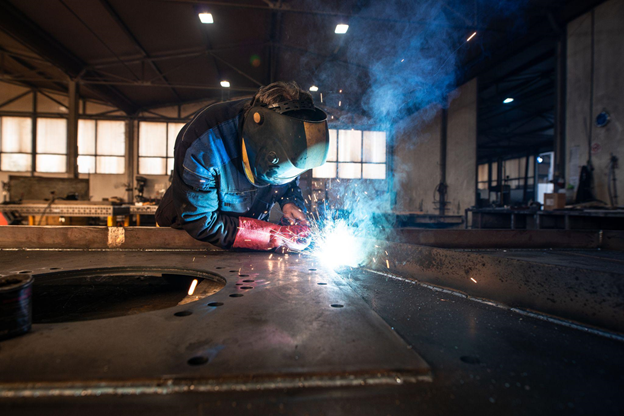Welding is the backbone of numerous industries, serving as a critical process in manufacturing, construction, automotive, and aerospace applications. Over the years, welding has evolved significantly, with technological advancements transforming it into a more efficient, precise, and sustainable practice. Today, innovations in welding technology are addressing traditional challenges, enhancing productivity, and meeting the growing demand for complex and high-quality welds.
Evolution of Welding Technologies
Welding methods have come a long way from basic arc welding techniques. Today’s advanced technologies are designed to handle diverse materials and intricate structures. Innovations such as laser welding, friction stir welding (FSW), and robotic welding are at the forefront, revolutionizing how industries approach fabrication and assembly.
Laser Welding
Laser welding uses a concentrated beam of light to fuse materials, offering unparalleled precision and speed. This method is ideal for intricate and high-volume applications, such as in the automotive and electronics industries. It allows for minimal heat distortion, resulting in cleaner and stronger welds.
Friction Stir Welding (FSW)
FSW is a solid-state joining technique that is gaining traction for welding aluminium and other light alloys. This innovative process generates heat through friction, eliminating the need for filler materials and providing superior strength and durability.
Robotic Welding
Automation in welding is becoming increasingly common, with robotic welding systems taking centre stage. These systems improve accuracy, consistency, and productivity while reducing human errors and safety risks. As industries adopt smart manufacturing practices, robotic welding is expected to play a vital role in streamlining operations.
Advanced Materials and Techniques
In addition to new technologies, advancements in materials and techniques are pushing welding capabilities further.
- Hybrid Welding
Combining two or more welding methods, hybrid welding capitalizes on the strengths of each technique. For example, hybrid laser-arc welding merges the precision of laser welding with the robustness of arc welding, creating strong joints at a faster rate.
- 3D Printing and Welding Integration
Additive manufacturing, commonly known as 3D printing, is being integrated with welding to create complex structures layer by layer. This approach reduces material waste and allows for innovative designs that were previously impossible to achieve with traditional methods.
Sustainable Welding Practices
With growing environmental concerns, the welding industry is also focusing on sustainability. Innovations like energy-efficient welding machines and processes that minimize waste are becoming a priority. Furthermore, advanced filtration systems, such as industrial dust collectors, play a critical role in maintaining air quality by capturing harmful fumes and particulates generated during welding.
Digitalization and Welding
The integration of digital technologies into welding is another game-changer.
- Welding Simulators
Virtual reality (VR) welding simulators are revolutionizing training programs. They allow welders to practice in a risk-free environment, reducing material costs and accelerating skill development.
- IoT in Welding
The Internet of Things (IoT) is enabling connected welding systems that monitor performance in real time. These systems provide valuable data on weld quality, machine health, and energy consumption, helping industries optimize operations and reduce downtime.
- AI and Machine Learning
Artificial intelligence (AI) is enhancing welding quality by analyzing patterns and predicting defects. Machine learning algorithms are also being used to automate complex welding processes, ensuring precision and consistency.
Addressing Challenges with Dust Collectors
Welding processes often produce hazardous fumes and fine particulates that pose risks to worker health and equipment longevity. Effective dust management systems, such as a dust collector for welding, are essential in industrial settings. These systems capture and filter out airborne contaminants, ensuring a safer and cleaner environment.
One example is the application of industrial dust collectors in large-scale manufacturing units. These collectors are designed to handle high volumes of welding fumes and particulate matter, contributing to improved air quality and compliance with occupational safety standards.
Case Study: A Revolution in Welding
A leading automotive manufacturer recently adopted a robotic welding system integrated with IoT capabilities. Alongside, they installed an advanced industrial dust collector to manage fumes and particulates. The result was a significant boost in productivity, reduced energy consumption, and a healthier workspace for employees. This case highlights the transformative potential of combining cutting-edge technologies with robust safety measures.
If you’re working in a welding environment, you know how challenging it can be to deal with the fumes and dust that come with the job. That’s where the Tysum Dust Collector for Welding steps in. The Tysum Dust Collector is a robust machine that’s as powerful as it is practical. It’s specifically designed to suck up welding fumes and fine particulates, creating a safer, cleaner workspace. Its industrial-grade construction ensures it can handle the tough conditions of manufacturing, automotive, and construction industries while staying reliable over the long haul.
Designed to tackle these problems head-on, this dust collector is built for efficiency, durability, and ease of use, making it a go-to choice for many workshops and industrial setups.
Looking Ahead
The welding industry is poised for further innovation as technologies continue to evolve. Areas such as advanced robotics, AI integration, and sustainable practices will drive the next wave of changes. Additionally, hybrid welding methods and additive manufacturing are expected to expand their applications, offering new possibilities for industries worldwide.
Conclusion
The welding industry is undergoing a revolution driven by innovations that enhance efficiency, precision, and sustainability. From advanced techniques like laser welding and FSW to digital tools such as IoT and AI, the field is setting new benchmarks for performance and quality. As businesses prioritize workplace safety and environmental compliance, the integration of solutions like dust collectors for welding is crucial for maintaining cleaner, safer work environments. With these advancements, welding is not just about joining materials; it’s about creating smarter, stronger, and more sustainable connections that meet the demands of a dynamic industrial landscape.













Comments